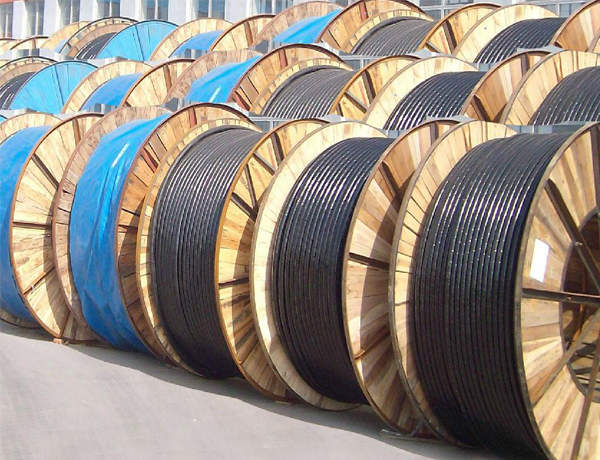Black flame retardant cable material is usually matched by adding carbon black masterbatch or carbon black powder. According to the different requirements of blackness and carbon black content, the proportion of carbon black added in cable material is also different. Carbon black not only has color effect, but also has anti-ultraviolet effect. Carbon black itself is a good anti-ultraviolet agent.
The weatherability of black cable sheath material is usually achieved by adding a certain proportion of carbon black. For example, common sheath material or flame retardant sheath material for black ultra-high voltage cable generally requires carbon black content (proportion) of cable material to be (2.6%+0.25%). The standard of testing carbon black content is GB/T 2951.41-2008 "Cable insulation and sheath". General test methods for materials Part 4: Specific test methods for polyethylene and polypropylene mixtures Section 1: Resistance to environmental stress cracking - winding test after air thermal aging - Melt index measurement method - Test method for carbon black and/or mineral filler content in polyethylene. The method of testing carbon black content in this standard can be simply summarized as follows: firstly, the resin component in cable material is decomposed in nitrogen environment in a certain temperature range, and then the carbon black is burned in oxygen environment. The weight loss of carbon black after burning can be used to obtain the quality of carbon black in the sample. Finally, the carbon black content in the sample is obtained by dividing the quality of carbon black by the quality of the sample.( Proportion).
When the main components of black cable material are resin and carbon black without other minerals, the method of GB/T 2951.41-2008 is suitable to test the carbon black content in cable material, and the measured data are close to the theoretical calculation data. However, it is sometimes inappropriate to test the carbon black content in black flame-retardant cable materials by using the method in this standard, because various inorganic flame retardants in black flame-retardant cable materials will have a certain impact on the test results of carbon black content. Here's a general analysis of how inorganic flame retardants affect carbon black content testing.
At present, the flame retardants used in cable materials are generally divided into organic flame retardants and inorganic flame retardants. Among them, inorganic flame retardants generally include aluminium hydroxide, magnesium hydroxide, antimony trioxide (commonly used in conjunction with bromine flame retardants), and some inorganic flame retardants such as calcium carbonate and silicate, etc. Among the inorganic flame retardants, aluminium hydroxide and magnesium hydroxide are commonly used, and the amount of them is relatively large. Taking magnesium hydroxide as an example, this paper illustrates how some inorganic flame retardants in cable materials affect the test of carbon black content. Magnesium hydroxide is tested by TGA. The results are shown in the figure. It can be seen from the figure that magnesium hydroxide begins to decompose at about 285 C. It takes about 60 minutes for magnesium hydroxide to decompose to constant weight.
The weatherability of black cable sheath material is usually achieved by adding a certain proportion of carbon black. For example, common sheath material or flame retardant sheath material for black ultra-high voltage cable generally requires carbon black content (proportion) of cable material to be (2.6%+0.25%). The standard of testing carbon black content is GB/T 2951.41-2008 "Cable insulation and sheath". General test methods for materials Part 4: Specific test methods for polyethylene and polypropylene mixtures Section 1: Resistance to environmental stress cracking - winding test after air thermal aging - Melt index measurement method - Test method for carbon black and/or mineral filler content in polyethylene. The method of testing carbon black content in this standard can be simply summarized as follows: firstly, the resin component in cable material is decomposed in nitrogen environment in a certain temperature range, and then the carbon black is burned in oxygen environment. The weight loss of carbon black after burning can be used to obtain the quality of carbon black in the sample. Finally, the carbon black content in the sample is obtained by dividing the quality of carbon black by the quality of the sample.( Proportion).
When the main components of black cable material are resin and carbon black without other minerals, the method of GB/T 2951.41-2008 is suitable to test the carbon black content in cable material, and the measured data are close to the theoretical calculation data. However, it is sometimes inappropriate to test the carbon black content in black flame-retardant cable materials by using the method in this standard, because various inorganic flame retardants in black flame-retardant cable materials will have a certain impact on the test results of carbon black content. Here's a general analysis of how inorganic flame retardants affect carbon black content testing.
At present, the flame retardants used in cable materials are generally divided into organic flame retardants and inorganic flame retardants. Among them, inorganic flame retardants generally include aluminium hydroxide, magnesium hydroxide, antimony trioxide (commonly used in conjunction with bromine flame retardants), and some inorganic flame retardants such as calcium carbonate and silicate, etc. Among the inorganic flame retardants, aluminium hydroxide and magnesium hydroxide are commonly used, and the amount of them is relatively large. Taking magnesium hydroxide as an example, this paper illustrates how some inorganic flame retardants in cable materials affect the test of carbon black content. Magnesium hydroxide is tested by TGA. The results are shown in the figure. It can be seen from the figure that magnesium hydroxide begins to decompose at about 285 C. It takes about 60 minutes for magnesium hydroxide to decompose to constant weight.





